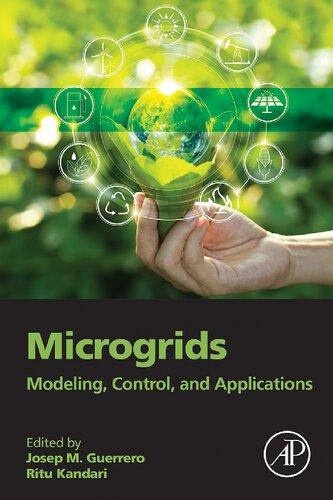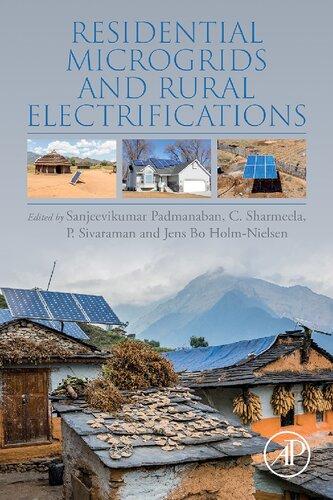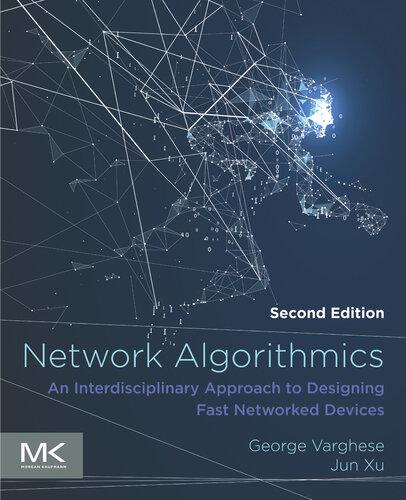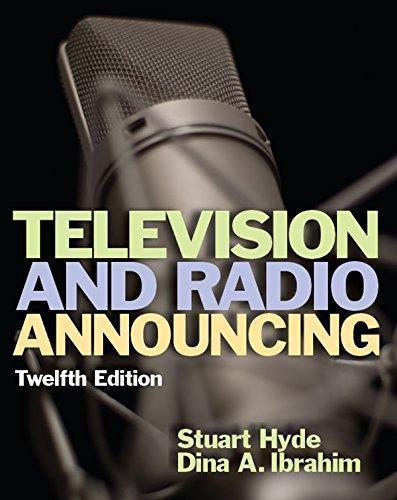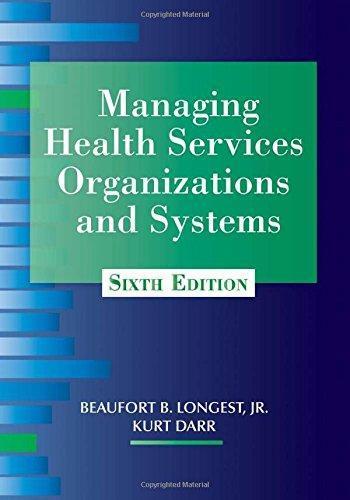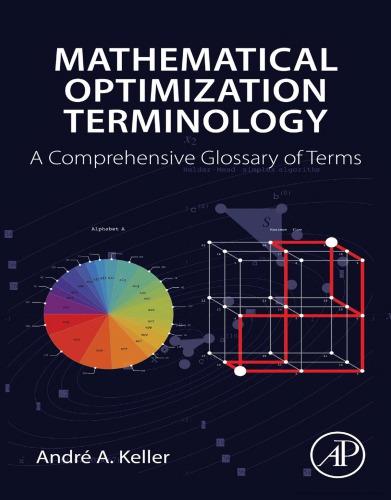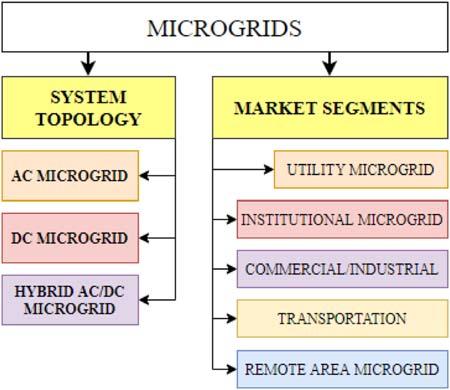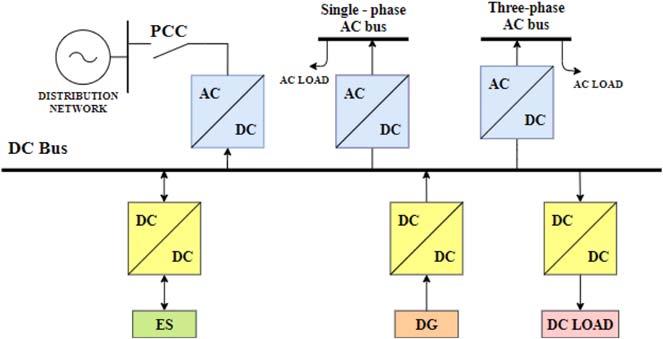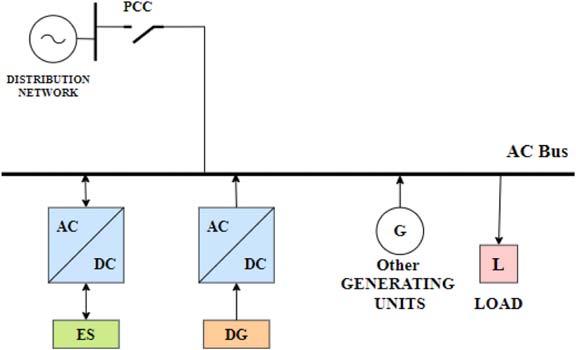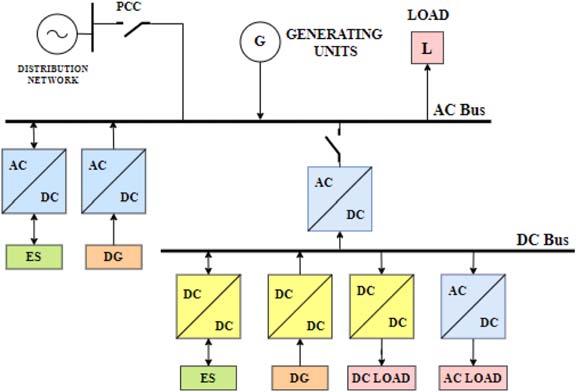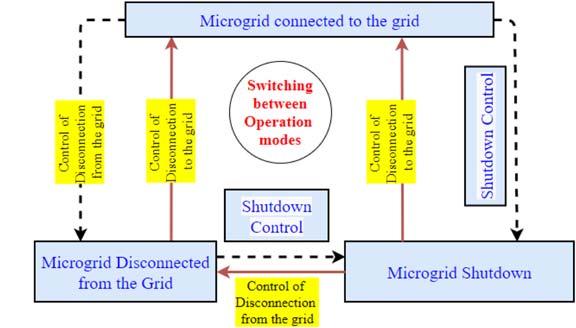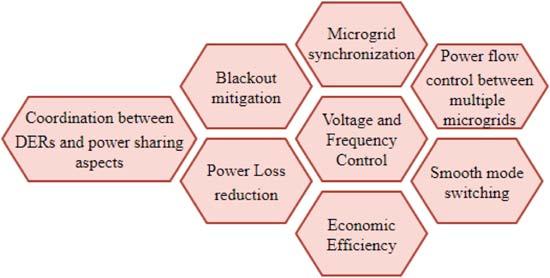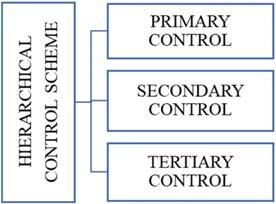https://ebookmass.com/product/microgrids-josep-m-guerrero/
Instant digital products (PDF, ePub, MOBI) ready for you
Download now and discover formats that fit your needs...
Métodos de investigación clínica y epidemiológica (Spanish Edition) Josep Maria Argimon Pallàs & Josep Jiménez Villa [Pallàs
https://ebookmass.com/product/metodos-de-investigacion-clinica-yepidemiologica-spanish-edition-josep-maria-argimon-pallas-josepjimenez-villa-pallas/ ebookmass.com
Residential Microgrids and Rural Electrifications
Sanjeevikumar Padmanaban
https://ebookmass.com/product/residential-microgrids-and-ruralelectrifications-sanjeevikumar-padmanaban/
ebookmass.com
METODOS DE INVESTIGACIÓN CLÍNICA Y EPIDEMIOLÓGICA 5º
Edition Josep Aragon Pallas
https://ebookmass.com/product/metodos-de-investigacion-clinica-yepidemiologica-5o-edition-josep-aragon-pallas/
ebookmass.com
Modernizing VATs in Africa Sijbren Cnossen
https://ebookmass.com/product/modernizing-vats-in-africa-sijbrencnossen/
ebookmass.com
Network Algorithmics 2nd Edition Varghese
https://ebookmass.com/product/network-algorithmics-2nd-editionvarghese/
ebookmass.com
Elementary Principles of Chemical Processes, 4th Edition 4th Edition, (Ebook PDF)
https://ebookmass.com/product/elementary-principles-of-chemicalprocesses-4th-edition-4th-edition-ebook-pdf/
ebookmass.com
Cancelled. The Left Way Back from Woke Umut Ozkirimli
https://ebookmass.com/product/cancelled-the-left-way-back-from-wokeumut-ozkirimli/
ebookmass.com
Television and Radio Announcing, 12th Edition – Ebook PDF Version
https://ebookmass.com/product/television-and-radio-announcing-12thedition-ebook-pdf-version/
ebookmass.com
Managing Health Services Organizations and Systems
Healthcare managers
https://ebookmass.com/product/managing-health-services-organizationsand-systems-healthcare-managers/
ebookmass.com
Mathematical optimization terminology: a comprehensive glossary of terms First Edition Keller
https://ebookmass.com/product/mathematical-optimization-terminology-acomprehensive-glossary-of-terms-first-edition-keller/
ebookmass.com
Microgrids
Thispageintentionallyleftblank
Microgrids Modeling,Control,and Applications
Editedby JOSEPM.GUERRERO
CenterforResearchonMicrogrids(CROM), AalborgUniversity,AalborgEast,Denmark
RITUKANDARI
DepartmentofElectronicsandCommunication Engineering,IndiraGandhiDelhiTechnicalUniversity forWomen,Delhi,India
AcademicPressisanimprintofElsevier
125LondonWall,LondonEC2Y5AS,UnitedKingdom 525BStreet,Suite1650,SanDiego,CA92101,UnitedStates 50HampshireStreet,5thFloor,Cambridge,MA02139,UnitedStates TheBoulevard,LangfordLane,Kidlington,OxfordOX51GB,UnitedKingdom
Copyright©2022ElsevierInc.Allrightsreserved.
Nopartofthispublicationmaybereproducedortransmittedinanyformorbyanymeans, electronicormechanical,includingphotocopying,recording,oranyinformationstorageand retrievalsystem,withoutpermissioninwritingfromthepublisher.Detailsonhowtoseek permission,furtherinformationaboutthePublisher’spermissionspoliciesandour arrangementswithorganizationssuchastheCopyrightClearanceCenterandtheCopyright LicensingAgency,canbefoundatourwebsite: www.elsevier.com/permissions.
Thisbookandtheindividualcontributionscontainedinitareprotectedundercopyrightby thePublisher(otherthanasmaybenotedherein).
Notices
Knowledgeandbestpracticeinthisfieldareconstantlychanging.Asnewresearchand experiencebroadenourunderstanding,changesinresearchmethods,professionalpractices, ormedicaltreatmentmaybecomenecessary.
Practitionersandresearchersmustalwaysrelyontheirownexperienceandknowledgein evaluatingandusinganyinformation,methods,compounds,orexperimentsdescribed herein.Inusingsuchinformationormethodstheyshouldbemindfuloftheirownsafety andthesafetyofothers,includingpartiesforwhomtheyhaveaprofessionalresponsibility.
Tothefullestextentofthelaw,neitherthePublishernortheauthors,contributors,or editors,assumeanyliabilityforanyinjuryand/ordamagetopersonsorpropertyasamatter ofproductsliability,negligenceorotherwise,orfromanyuseoroperationofanymethods, products,instructions,orideascontainedinthematerialherein.
BritishLibraryCataloguing-in-PublicationData
AcataloguerecordforthisbookisavailablefromtheBritishLibrary LibraryofCongressCataloging-in-PublicationData
AcatalogrecordforthisbookisavailablefromtheLibraryofCongress ISBN:978-0-323-85463-4
ForInformationonallAcademicPresspublications visitourwebsiteat https://www.elsevier.com/books-and-journals
Publisher: JoeHayton
AcquisitionsEditor: LisaReading
EditorialProjectManager: AleksandraPackowska
ProductionProjectManager: PrasannaKalyanaraman
CoverDesigner: GregHarris
TypesetbyMPSLimited,Chennai,India
Inthehonorof Myfather LateMr.MatwarSinghKandari
Icannotfindwordstoexpressmygratitudetomylatefatherwhoalways supportedmeunconditionallyandmademeanindependentanddeterminedperson.HealwayspushedmetobemorethanwhatIthinkI'm capableofdoing!
Iwouldalsoliketodedicatethistomybelovedmother, Mrs.Trilochana Devi,mysiblings, Mrs.Manju,Mrs.Meenu,and Mr.DeepakKandari,my nephewandniece, Adit and Adhya withoutwhomIwouldneverbeable toachievemyobjectivesandsucceedinlife.
Iamalsothankfultomygrandfather, Mr.BhawanSinghKandari,R/O Paithani,Uttarakand foralwaysbeingsosupportiveandunderstandingmy thoughtprocess.
Iamgratefultomycoeditor,Prof.JosepM.Guerreroandallthecontributorsforworkingsohardwithmeforthetimelycompletionofthis book.
Last,butnottheleast,Iwouldliketoexpressmygratitudetothepublisher,Elsevier, AleksandraPackowska,PrasannaKalyanaraman,GregHarris, LisaReading,JoeHayton andteamfortheircontinuoussupport,feedback, andsuggestionsthroughoutthisprocessandpublishingthisbookwith Elsevier.
RituKandari
Thispageintentionallyleftblank
SectionIIntroductiontomicrogrids
1.Microgrids,theirtypes,andapplications3
AyushMittal,AryanRajput,KamyaJoharandRituKandari
1.1 Introduction3
1.2 Microgridclassification4
1.3 Structure6
1.4 Modesofoperation8
1.5 ControlofACmicrogrid9
1.5.1 Hierarchicalcontrolschemes10
1.6 ControlofDCmicrogrid12
1.6.1 Controlstructures13
1.7 Controlofhybrid(AC/DC)microgrid16
1.8 Microgridresearchareas17
1.9 Solar20
1.9.1 Independent(orstand-alone)PVsystem21
1.9.2 Grid-connectedPVsystem21
1.9.3 PVmodeling22
1.10 Maximumpowerpointtracking24
1.10.1 P&Omethod24
1.11 Windturbinesystem25 1.12 Battery26
1.12.1 Lithium-ionbattery26
1.12.2 Lead acidbattery27
1.12.3 Batterymodeling27
1.12.4 Sizingbatteriescorrectly28 1.13 Fuelcell29
1.14 Advantagesandapplicationsofmicrogrid32 1.15 Conclusion34 References34
SectionIIACmicrogrids
2.Disturbanceobserver aidedadaptiveslidingmodecontrollerfor frequencyregulationinhybridpowersystem43
VivekPatel,DipayanGuhaandShubhiPurwar
2.1 Introduction43
2.2 Systemmodeling46
2.2.1 Modelofreheatedthermalpowersystem47
2.2.2 Distributedenergyresources48
2.3 Disturbanceobserver aidedadaptiveslidingmodeloadfrequency controller51
2.3.1 Traditionalslidingmodeloadfrequencycontroller(SMLFC)51
2.3.2 AdaptiveslidingmodeLFCwithdisturbanceobserver52
2.4 Resultsanddiscussion55
2.4.1 PerformanceanalysisofisolatedHPSagainstmultipleload perturbation55
2.4.2 PerformanceanalysisofisolatedHPSwithmultiple-steploadsand randomwindpowerperturbation57
2.4.3 PerformanceanalysisofisolatedHPSwithGRCandGDB57
2.4.4 Performanceanalysisofinterconnectedtwo-areaHPSwith multiple-steploadandRWPP58
2.4.5 Performanceanalysisoftwo-areaHPSwithGRCandGDB61
2.4.6 Robuststabilityanalysis62
2.5 Conclusion63 References63
3.RecentadvancementsinACmicrogrids:anewsmartapproach toACmicrogridmonitoringandcontrolusingIoT67 P.MadhumathyandShwetaBabuPrasad
3.1 Introduction67
3.2 Problemstatement73
3.3 Literaturesurvey74
3.4 Blockdiagram77
3.5 Methodology79
3.6 Detailsofhardwareandsoftwareused79
3.6.1 LCDdisplay(JDH162A):a16 3 2LCDisadisplayunitusedin differentactivities79
3.7 Detailsaboutthewebportal:ThingSpeak80
3.8 Algorithm81
3.9 Softwaredevelopmentflowchart81
3.10 Resultsanddiscussions82
3.10.1 Hardwaresectionofthemodel82
3.11 Graphicalanalysis83
3.12 Conclusionandfuturescope85 References86 Furtherreading87
SectionIIIDCmicrogrids
4.DCmicrogrid91 RituKandari,NeerajandAyushMittal
4.1 Introduction91
4.2 DCmicrogrid92
4.3 Modeofoperation96
4.4 AdvantagesofDCmicrogrid101
4.5 Standards101
4.6 DCmicrogridarchitecture102
4.6.1 Photovoltaicscell/solar106
4.6.2 DC DCconverters110
4.7 Principleofchopper111
4.8 Boostconverter111
4.9 Case-I(switch S isON)111
4.10 Case-II(switch S isOFF)112
4.11 Buck-boostconverter112
4.12 Case-I(switch S isON)113
4.13 Case-II(switch S isOFF)113
4.13.1 Maximumpowerpointtrackingcontroller114
4.13.2 Storagedevice battery118
4.14 Workingprinciple118
4.15 Dischargingmechanism119
4.16 Chargingmechanism119
4.17 Stateofchargeandstateofhealth121 4.18 Typesofbatteries121
4.18.1 Modeling124 4.19 Typesofmodelingmethods127
4.20 Equivalentcircuitmodel128 4.21 Data-drivenmodel130
4.22 Casestudy131
4.23 Conclusion134 References134
5.RoleofdualactivebridgeisolatedbidirectionalDC-DC converterinaDCmicrogrid141
AnupamKumarandAbdulHamidBhat
5.1 Introduction141
5.2 Microgrid142
5.3 Dual-activebridgeconverter143
5.3.1 DABparameterdesign146
5.4 Fuzzylogiccontroller148
5.5 Performanceevaluation149
5.5.1 Single-phaseshifttechnique149
5.5.2 Forwardconductionmode151
5.5.3 Reverseconductionmode151
5.6 Experimentalverification153
5.7 Conclusion154 References155
SectionIVHybridAC/DCmicrogrids
6.IntroductiontohybridAC/DCmicrogrids159 ShivaniMishraandR.K.Viral
6.1 Introduction159
6.1.1 Hybridmicro-grid160
6.1.2 Thetopographiesofhybridmicro-grid162
6.1.3 Needofhybridmicro-grid162
6.1.4 Comparisonbetweenconventionalgridandhybridmicro-grid162
6.2 Architectureofhybridmicro-grid163
6.3 ArchitectureofAC-coupledhybridmicro-grid164
6.4 ArchitectureofDC-coupledhybridmicro-grid165
6.5 ArchitectureofAC-DCcoupledhybridmicro-grid166
6.6 Modelingofhybridmicro-gridcomponents167
6.6.1 PVsystemmodel167
6.6.2 Windenergysystemmodel168
6.6.3 Biomassenergymodel169
6.6.4 Small-hydrosystemmodel169
6.6.5 Batterymodel170
6.6.6 Fuelcellmodel171
6.7 Powerqualityissuesinhybridmicro-grid172
6.8 Controlstrategiesandenergymanagementsystemforhybridmicro-grid172
6.8.1 AC-coupledhybridmicro-grid172
6.8.2 DC-coupledhybridmicro-grid173
6.8.3 AC-DCcoupledhybridmicro-grid174
6.8.4 Transitionbetweengrid-connectedandstandaloneoperation modeforenergymanagement175
6.9 Modelingofhybridmicro-grid176
6.9.1 ModelingofPVandwindhybridmicro-grid176
6.9.2 ModelingofPV,windandbiomasshybridmicro-grid177
6.9.3 ModelingofPV,wind,biomassandsmallhydrohybridmicro-grid177
6.10 Mathematicalmodelingofhybridmicro-grid178
6.10.1 ModelingofACmicro-grid178
6.10.2 ModelingofDCmicro-grid179
6.11 Coordinationcontroloftheconverters179
6.11.1 Isolatedmode179
6.12 Grid-connectedmode180
6.13 Economicpotentialandtheirbenefitsforhybridmicro-grid181
6.13.1 Creditrisk183
6.13.2 Commercialrisk183
6.13.3 Returns184
6.14 Casestudyregardinghybridmicro-grid184
6.15 Conclusion186 References187
7.ControlofhybridAC/DCmicrogrids191
P.ShambhuPrasad,AliveluM.ParimiandL.Renuka
7.1 Introduction191
7.1.1 Microgridstability194
7.1.2 Frequencystability195
7.2 Literaturereview196
7.3 Theoreticalapproach differentcontroltechniques198
7.3.1 Structuresofrobustcontrollers199
7.3.2 Generalmixedsensitivityproblem202
7.3.3 HInfinitycontrolproblem205
7.3.4 Structuredsingularvalue- μ controltheory206
7.4 Methodology209
7.5 Resultsanddiscussion casestudies212
7.5.1 Hinfinitycontrollerfrequencyresponse212
7.5.2 Musynthesiscontrollerfrequencyresponse214
7.5.3 μ synthesiscontrollerwithparametricvariations215
7.5.4 Orderreductionofthecontroller216
7.5.5 Casestudies comparisonofcontroltechniques216
7.6 Conclusion220
7.7 Summary220 References223
8.RecentadvancementsinhybridAC/DCmicrogrids227 P.ShambhuPrasadandAliveluM.Parimi
8.1 Introduction228
8.2 ChallengesinhybridAC/DCmicrogridandpossiblesolutions231
8.2.1 Operationalaspects231
8.2.2 Compatibilityissues232
8.2.3 Uncertainty,andperturbationsintherenewablesourcesofenergy232
8.2.4 Protection233
8.2.5 Reliability234
8.3 Advancesinhybridmicrogrids234
8.3.1 Systemmodeling235
8.3.2 K-nearestneighbors236
8.3.3 Controllawformulation236
8.4 Casestudy238
8.4.1 Preparationofdataset238
8.4.2 Datalabeling238
8.4.3 Datadivisionfortrainingandtesting240
8.4.4 Trainingthemodel240
8.4.5 Trainingaccuracy240
8.4.6 Testingaccuracy240
8.4.7 Makingpredictions241
8.4.8 Evaluatingtestingaccuracy241
8.4.9 Evaluatingtrainingaccuracy242
8.4.10 Plotting242
8.4.11 Usinglogisticregression242
8.5 Conclusion243 References244 Index 247
Listofcontributors
AbdulHamidBhat
NationalInstituteofTechnology,India
DipayanGuha ElectricalEngineeringDepartment,MotilalNehruNationalInstituteofTechnology Allahabad,India
KamyaJohar IEEEMember,India
RituKandari
IndiraGandhiDelhiTechnicalUniversityforWomen,India
AnupamKumar ModernInstituteofTechnologyandResearchCentre,India
P.Madhumathy
DayanandaSagarAcademyofTechnologyandManagement,India
ShivaniMishra DepartmentofElectrical&ElectronicsEngineering,AmitySchoolofEngineeringand Technology,AmityUniversity,India
AyushMittal OpenSystemsInternational,Inc.,India
Neeraj
IndiraGandhiDelhiTechnicalUniversityforWomen,India
AliveluM.Parimi DepartmentofElectricalandElectronicsEngineering,BITSPilani,HyderabadCampus, India
VivekPatel ElectricalEngineeringDepartment,MotilalNehruNationalInstituteofTechnology Allahabad,India
P.ShambhuPrasad DepartmentofElectricalandElectronicsEngineering,BITSPilani,HyderabadCampus, India
ShwetaBabuPrasad
DayanandaSagarAcademyofTechnologyandManagement,India
ShubhiPurwar ElectricalEngineeringDepartment,MotilalNehruNationalInstituteofTechnology Allahabad,India
AryanRajput
HMRInstituteofTechnologyandManagement,India
L.Renuka
DepartmentofElectricalandElectronicsEngineering,BITSPilani,HyderabadCampus, India
R.K.Viral
DepartmentofElectrical&ElectronicsEngineering,AmitySchoolofEngineeringand Technology,AmityUniversity,India
SECTIONI Introductionto microgrids
Thispageintentionallyleftblank
CHAPTER1
Microgrids,theirtypes,and applications
AyushMittal1,AryanRajput2,KamyaJohar3 andRituKandari4
1OpenSystemsInternational,Inc.,India
2HMRInstituteofTechnologyandManagement,India
3IEEEMember,India
4IndiraGandhiDelhiTechnicalUniversityforWomen,India
1.1Introduction
Withanexponentialriseinthedemandofelectricalenergy,ahuge changeintheutilizationofenergyisobserved.Tofulfillthegrowthand cutoffthedependencyonfossilfuelsandagedpowertransportationnetworks,numerousrenewableenergyresources,includingandnotlimited to solarphotovoltaics(PV),windenergy,andfuelcells(FCs)are exploredalongwiththeevolutionofvarioustechniques,including geographicallydistributed(andinterfaced)energyresources,powerelectronic converter(s)(PECs),andenergystoragesystems(ESSs).Theproficiencyin theresearchedtechniquespavedthepathfortheoperationofanew entitywhichcametobeknownasmicrogrid.
Severalengineersandresearchersalongwithinstitutionshaveprofferedvarieddefinitionsfortheterm “microgrid.” Forexample,thedefinitionacceptedbytheInternationalElectro-TechnicalCommissionas proposedbyAdvanceGridResearchatUSDepartmentofEnergyfor themicrogridis, “Amicrogridisagroupofinterconnectedloadsand distributedenergyresourceswithinclearlydefinedelectricalboundaries thatactsasasinglecontrollableent itywithrespecttothegrid.Itcan connectanddisconnectfromthegridtoenableittooperateingridconnectedorisland-mode.” Nejabatkhah,Li,andTian(2019), Olivares etal.(2014) , Parhizi,Lotfi,Khodaei, andBahramirad(2015) define microgridas, “theconceptofroamingDERsandvariousloadsinthe existingpowersystem,suchassolar- PV,windturbines,micro-turbines, andstoragedeviceswhichcanbeoperatedeitheringrid-connected modeorinstand-alonemode.”
Generally,microgridisthecompositionofdistributedgeneration (DG),loads,ESS,PECs,andcontroldevices;butthebasisofmicrogridis distributedresource(DR)thatisthesummationofDGsandESS,thatis, DR 5 DG 1 ESS.DGsrefertosmall-scalepowersystemthatmaybe independentofthelargeelectricalgridandareprimarilylocatedonthe consumersidetomeettheirdemands,whereasESSstoresenergyinbatteries,flywheel,regenerativeFC,andotherdevices.TheDGandDR technologiesaresubsetofdistributedenergyresources(DER)thatis definedasthegenerationorproductionofelectricityorheatontheload (ordemand)endforlocalapplication(Gupta,Kandari,&Kumar,2021).
1.2Microgridclassification
Thebasefortheclassificationofmicrogridscanbebroadlydividedinto twocategories systemtopologyandmarketsegments(or,utilityareas). Systemtopology(or,architecture)canclassifymicrogridsinthree subsets (1)DCmicrogrid,(2)ACmicrogrid,and(3)hybridAC/DC microgrid,whereastheareaofapplicationcanclassifythesameintofive broadcategories (1)utility,(2)commercial/industrial,(3)institutional, (4)transportation,and(5)remote-areamicrogrid(s).Thesameisdepicted inthenextflowchart(Fig.1.1)(Mohammed,Refaat,Bayhan,&AbuRub,2019).
Figure1.1 Classificationofmicrogrid.
5 Microgrids,theirtypes,andapplications
1. DCmicrogrid
OwingtotheadvancementsintechnologyandPECs,DCmicrogrid hasemergedasamodernmarvelinthepowersystem.Theflexibility duetoitscapabilityofnaturalinterfacingwithDC-basedDG,renewableenergysource(RES),loads,andESSalongwiththeefficiencydue tominimalpowerconversionhascreatedanopportunityfortheDC microgrids.Moreover,anincreasedresearchinthefieldssuchasRES andDCmicrogridhasshowedtheprosofthesamethathelpsinbringingthetechnologyonestepclosertoreal-timeapplication.
Fig.1.2 showsthebasicarchitectureoftheDCmicrogrid(Che, Shahidehpour,Alabdulwahab,&Al-Turki,2015;Ferreira,Barbosa, Braga,&Ferreira,2013;Lonkar&Ponnaluri,2015).
2. ACmicrogrid
Thisisthecommonlyappliedconventionaltypeofmicrogrid.Several typesofDERssuchasPV,windturbines,andFCsareconnectedand mergedintothelargepowernetworkorexistingutilitygrids.Dueto laiddownnetwork,ACmicrogridrequiresminimummodificationandit bringsoutminimalalterationtothetopology.Thissystemiscommonly mergedwithlowandmediumvoltagelevelsduetoitscapabilityto inflatethedistributionnetworkwithreducedtransmissionlosses.
Thoughtheinterconnectionofmicrogridwithconventionalarchitectureisbeneficial,itbringsinadditionalcons,suchassystemstability,powerquality,reactivepowerdeficiency,andDERs synchronization.
Figure1.2 SchematicofDCmicrogridarchitecture.
Fig.1.3 showsanarchitectureofACmicrogrid(Alfergani, Alfaitori,Khalil,&Buaossa,2018;Kzaviri,Pahlevani,Jain,& Bakhshai,2017;Wu,Wu,Guerrero,Vasquez,&Li,2019).
3. HybridAC/DCmicrogrid
HybridmicrogridistheinterconnectionofACandDCmicrogrid(s). Thoughthenetworkarchitectureofhybridmicrogridsystemiscomplex, itoffersproslinkedwithboththemicrogrid(s)suchasflexibility,increased efficiencyandreliabilityalongwitheconomicoperation(Fusheng, Ruisheng,&Fengquan,2016).Thehybridtopologyfacilitatessmooth interconnectionwithconventionalgridduetoACmicrogridarchitecture, whereasDCmicrogridarchitecture helpsinamalgamationofDC-based RES,DERs,ESSs,andloadswithminimalalterationinexistingsystem. ThehybridmicrogridtopologydrasticallyreducesthenumberofPECs requiredfollowedwiththecutting downofunnecessarylossesdueto powerconversion(Ahmed,Meegahapola,Vahidnia,&Datta,2020; Nejabatkhahetal.,2019;Pati,Mohanty,Choudhury,&Kar,2017).The architectureofthehybridAC/DCmicrogridisdepictedin Fig.1.4.
1.3Structure
Themostbasicstructureofthemicrogridisdividedintothreelayers,as depictedin Fig.1.5 localcontrol(LC)layerinthebottom,followedby centralizedcontrol(CC)layer,andintheuppermostisthedistribution networkanddispatchlayer. Fig.1.6 describesthecompositionofthree
Figure1.3 SchematicofACmicrogridarchitecture.
Microgrids,theirtypes,andapplications
Figure1.4 SchematicofAC/DCmicrogridarchitecture.
Figure1.5 Three-layerstructureofthemicrogrid.
Figure1.6 Composition(orcomponents)ofthree-layermicrogrid.
layersofmicrogrid.Thefirstlayerfromtopisthedistributionlayerhandlingnetworkanddispatchingthepowertotheutilityend,followedby themiddlelayerthatisknownasCClayer.CClayerforecaststheload
demand,DGoutputandaccordinglyproposestheoperationalplans requiredintherealtime.Thelastlayer,ortheLClayer,isresponsibleto systematizetheDGs,ESs,andlocalloadwithinmicrogrid(Bidram& Davoudi,2012;Mariam,Basu,&Conlon,2016;RaveendranNairand CostaCastelló,n.d.;Tembo,2016)(Fig.1.7).
1.4Modesofoperation
Microgridprimarilyoperatesintwomodesofoperation islandedmode orgrid-connected.Thelattercanfurtherbesubclassifiedintopower matchedormismatchedoperationthatcanbeunderstoodwiththehelp ofpointofcommoncoupling(PCC)(Fig.1.8).Generally,theinterconnectionbetweenthedistributionnetworkandmicrogridisviaPCCand bothactive(P)andreactive(Q)powerflowsthroughthePCConly,that is,powerexchangebetweendistributionnetworkandmicrogridoccurs viaPCClink( Jain,Gupta,Masand,Agnihotri,&Jain,2016;Prakash, Tech,Paul,&Professor,n.d.;Sharma&Saini,2018).
Thepowerexchanged,thatis,changeinactivepowerandreactive powercanberepresentedas ΔP and ΔQ,respectively.Whenthevalue
Figure1.7 Schematicofthree-layermicrogridcontrolstructure.
Figure1.8 DifferentmodesofoperationviaPCClink. PCC,Pointofcommon coupling.
of ΔP and ΔQ is0(ΔP 5 0and ΔQ 5 0),thepowerflowviaPCCis0, depictingthattheDGoutputisstabilizedwiththeloaddemandandno powerisexchanged(ortransferred)viaPCC.Thismodeofoperationis knownaspower-matchedoperationandisconsideredthemosteconomicalmode(Prakashetal.,n.d.).But,unlikepreviouscase,ifthevalueof either ΔP or ΔQ isnot0(ΔP¼0or ΔQ¼0),thereisflowofchargesvia PCClink,depictingthatexchangeinpowertookplacebetweenthe microgridanddistributionnetwork.Thismodeofoperationisknownas power-mismatchedoperationandcanbeclassifiedintofollowingcases (Gupta,2014):
CaseI: ΔP or ΔQ ðÞ , 0
Iftheexchangedactive(orreactive)powerislessthan0,thatis, ΔP (or ΔQ) , 0,thepowergeneratedbyDGsisexcessiveandafterfulfilling theloaddemand,themicrogridhasinjectedpowerintothedistribution network.
CaseII: ΔP or ΔQ ðÞ . 0
Iftheexchangedactive(orreactive)powerismorethan0,thatis, ΔP (or ΔQ) . 0,thepowergeneratedbyDGsisdeficientforfulfillingthe loaddemand,thus,requiringadditionalpowertobetransferredfromthe distributionnetworktomicrogrid.
Fig.1.9 showstheseveralswitching(ortransfers)betweendifferent modesofoperationofmicrogrid.
1.5ControlofACmicrogrid
TooperatetheACmicrogridinstableconditionalongwitheconomic operation,robustcontroltechniquesarenecessary.Someofthecontrol
Figure1.9 Switching(ortransfer)betweenvariousoperatingmodes.
Figure1.10 IssuesassociatedwithACmicrogrid.
techniquesthathelpinreducingthestabilityissuesassociatedwiththeAC microgridarementionedin Fig.1.10.
1.5.1Hierarchicalcontrolschemes
Tofulfillthecontrolaspectsfortheabovementionedtechniques,three levelsofcontrolstrategiesareproposedanditisknownashierarchical controlscheme(Fig.1.11).Thethreelevelsofthehierarchicalschemes whichareappliedinACmicrogridscanbeclassifiedas (1)primarycontrol,(2)secondarycontrol,and(3)tertiarycontrolschemes.
1. Primarycontrolscheme
Theprimarycontrolschemeisdirectlyconnectedtothemicrogrid andcontrolsthefluctuationsduringthetransitionmodeofmicrogrid, thatis,switching(ortransition)fromgrid-connectedtoislanded mode.Thedisruptioninthegenerationofthepowerandload demandcouldcausetheinstabilityinthetwoprimeparameters voltageandfrequency oftheACmicrogrid;hence,thisschemeneedsto befuriousinoperationincomparisontoothertwoschemes.The principaltaskoftheprimarycontrolschemeistomaintainthe stablevoltageandfrequencywithintheacceptablelimits(Lopes, Moreira,&Madureira,2006).Thusfailingtocontroltheearliertwo parameterscouldcausethegridtobecomeinstable.Theothermajor functionsofthisschemeincludes (1)ensuringplugandplayoperationand(2)activeandreactivepowersharingbetweenparalleloperatingDERs(Bidram,Nasirian,Davoudi,&Lewis,2017).
Thisschemeisconsistedofcurrentcontrolor/andvoltagecontrol loopsofDERs.Inthisthevoltagesourceconverters(VSCs)couldbe utilizedeitherascurrent-controlledorvoltage-controlledvoltage sourceinverter.
Thecommonmethodsbasedondroopcontrolandvirtualimpedanceareutilizedasprimarycontrolstrategiesfortakingcareofpower sharingamongDERsconnectedinACmicrogrid(Guerrero,Vasquez, Matas,DeVicuña,&Castilla,2011).
2. Secondarycontrolscheme
Althoughvoltageandfrequencyaremaintainedbyprimarycontrol scheme,stilldeviationsinthesteady-stateparameters voltageandfrequency oftheACmicrogridareobserved.Thereforetoregulateand minimizethedeviationsinthesteady-stateparameters,secondary
Figure1.11 HierarchicalcontrolschemeofACmicrogrid.

